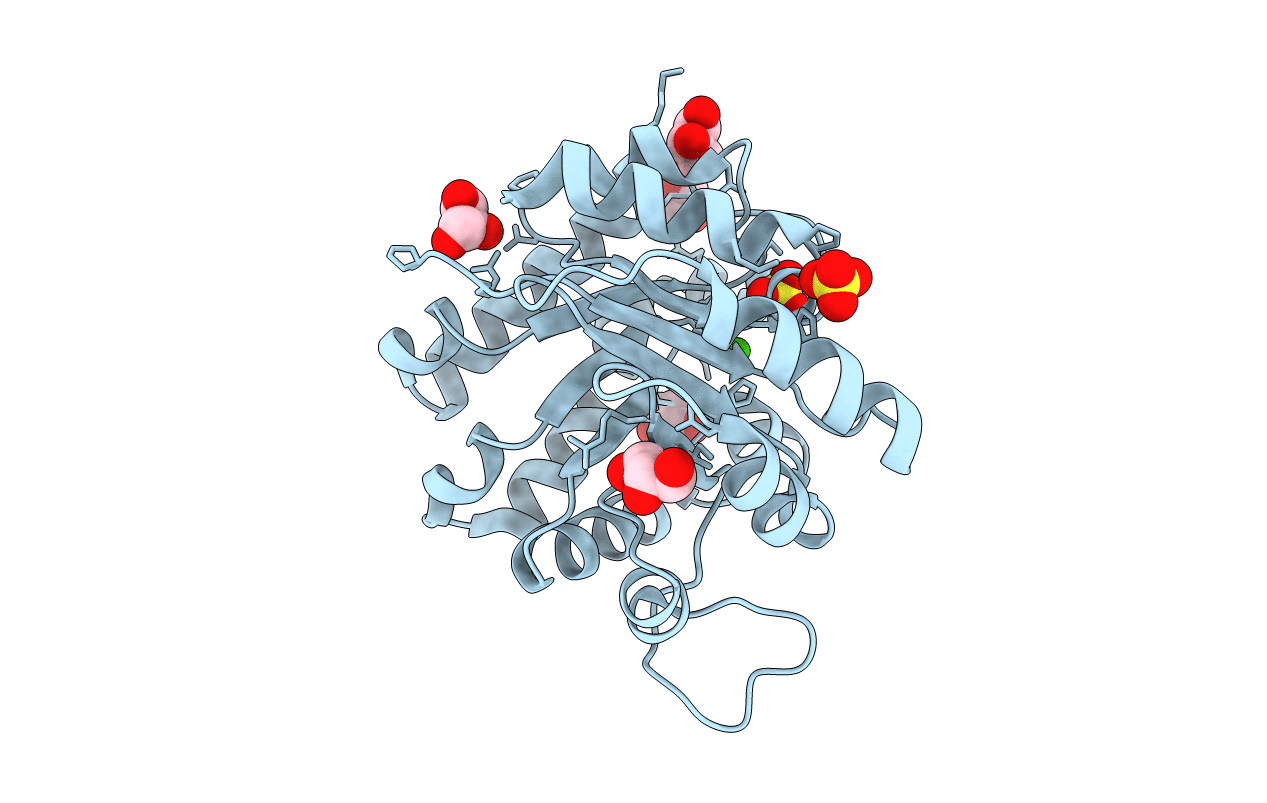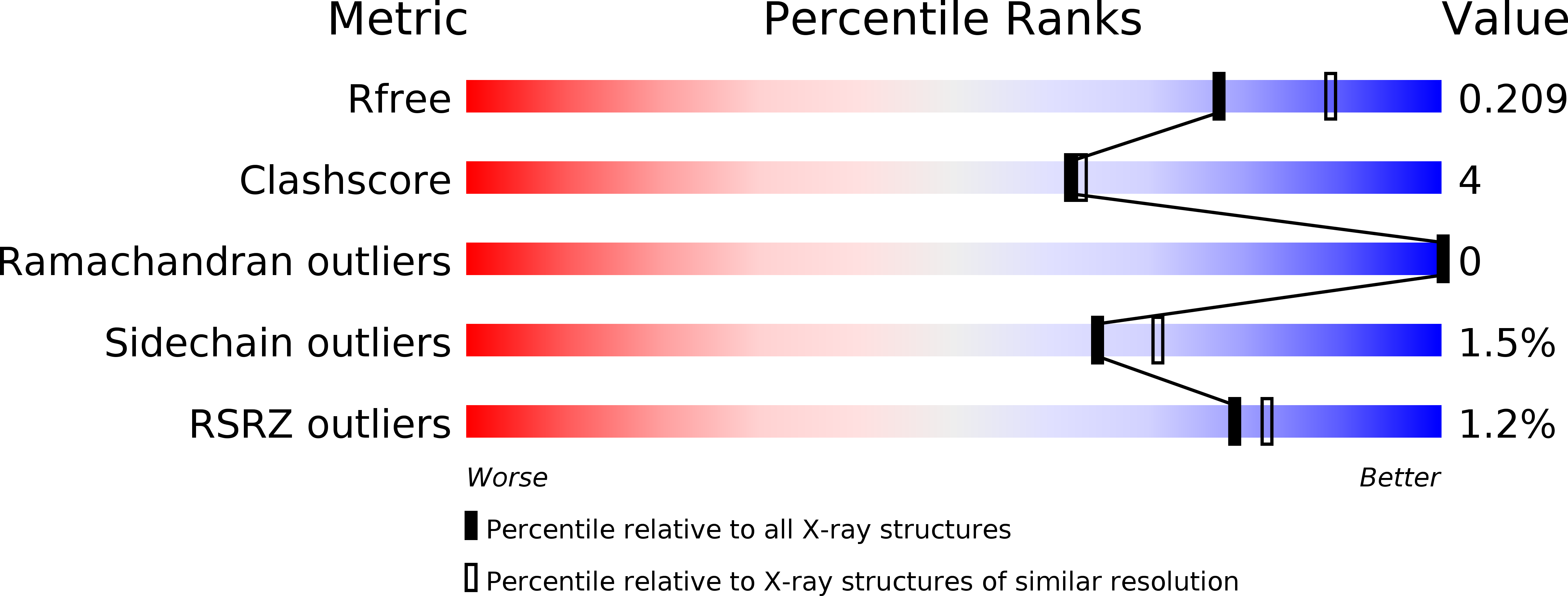
Deposition Date
2010-10-27
Release Date
2011-06-22
Last Version Date
2023-09-06
Entry Detail
PDB ID:
3PF3
Keywords:
Title:
Crystal structure of a mutant (C202A) of Triosephosphate isomerase from Giardia lamblia derivatized with MMTS
Biological Source:
Source Organism:
Giardia intestinalis (Taxon ID: 5741)
Host Organism:
Method Details:
Experimental Method:
Resolution:
2.10 Å
R-Value Free:
0.20
R-Value Work:
0.18
R-Value Observed:
0.18
Space Group:
I 2 2 2


